Visiting a pediatric neurologist for the first time can feel both important and overwhelming, especially when it concerns your child’s health. Whether you’re addressing developmental delays, seizures, ADHD symptoms, or behavioral issues, understanding what happens during the visit can ease anxiety and help you prepare.
During your first appointment, the neurologist reviews your child’s medical history, conducts a physical and neurological exam, and may suggest tests to diagnose conditions affecting the brain, nerves, or muscles. They’ll also discuss symptoms, treatment options, and next steps with you. For younger children, they may assess fine motor skills and developmental milestones.
In this blog, we’ll explain what a child neurologist does during your first visit, how to prepare, and what happens afterward.
What Is a Pediatric Neurologist?
A pediatric neurologist (or child neurologist) is a doctor who specializes in diagnosing and treating neurological disorders in children—conditions that affect the brain, spinal cord, nerves, and muscles.
Common conditions pediatric neurologists treat include:
- Seizures and epilepsy
- Headaches or migraines
- Autism spectrum disorders
- ADHD and attention problems
- Developmental delays
- Neuromuscular disorders
- Movement disorders such as tics or cerebral palsy
What to Expect at Your First Pediatric Neurologist Visit
The first visit helps the neurologist understand your child’s overall health and neurological function. Here’s what typically happens during the appointment:
1. Medical History Review
The visit usually begins with a detailed review of your child’s medical background. Be ready to share information such as:
- Pregnancy and birth details (premature birth, complications, etc.)
- Developmental milestones (first words, first steps, etc.)
- Past illnesses, injuries, or hospitalizations
- Current medications or supplements
- Family history of neurological or genetic conditions
Bringing previous test results, reports, or referrals can help the neurologist gain a more accurate picture of your child’s health.
Read More: Top 6 Common Pediatric Neurological Conditions
2. Discussing Symptoms and Concerns
The neurologist will ask questions about your child’s symptoms and daily behavior. This helps them identify patterns or triggers.
You may be asked:
- When did the symptoms begin?
- How often do they occur?
- What makes them better or worse?
- How do they impact school, sleep, or social life?
This discussion is an important step toward accurate diagnosis and treatment planning.
3. Neurological and Physical Examination
Next, the doctor performs a neurological exam to assess how well your child’s nervous system is functioning. This may include checking:
- Reflexes (like knee-jerk responses)
- Muscle strength, tone, and coordination
- Cognitive skills (memory, problem-solving, and communication)
- Sensory responses to touch, light, or sound
This exam is non-invasive, and the neurologist ensures your child feels comfortable throughout.
4. Diagnostic Tests or Screenings
Depending on the findings, the doctor may recommend tests such as:
- EEG (Electroencephalogram): to detect abnormal brain activity or seizures
- MRI or CT Scan: to view detailed brain or spinal images
- Blood Tests: to check for genetic or metabolic disorders
⚕️ When evaluating seizures or suspected epilepsy, tests like EEGs or MRIs are vital but not always performed at the first visit. The neurologist decides based on your child’s age, symptoms, and medical history.
5. Discussing the Diagnosis and Next Steps
Once the evaluation is complete, the pediatric neurologist will:
- Share preliminary findings
- Recommend additional tests if needed
- Discuss potential treatment options or therapies
- Suggest lifestyle adjustments (sleep, diet, or screen time)
- Schedule follow-up visits to monitor progress
They may also refer your child to specialists such as speech, occupational, or behavioral therapists for further care.
Tips to Prepare for Your Child’s Neurology Appointment
Preparing in advance helps make your first visit smoother and more productive. Here are some tips:
- Make a list of questions: Write down all your concerns so nothing is forgotten during the visit.
- Bring medical records: Include reports from your child’s pediatrician, therapists, or previous specialists.
- Take notes: Use a notebook or your phone to jot down the doctor’s recommendations and next steps.
- Involve your child: Encourage older children to describe how they feel or when symptoms occur.
- Bring comfort items: A favorite toy or blanket can help reduce anxiety for younger children.
Can a Pediatric Neurologist Diagnose ADHD?
Yes. Pediatric neurologists can diagnose ADHD (Attention-Deficit/Hyperactivity Disorder), especially when symptoms may overlap with other neurological or developmental issues. They assess cognitive, behavioral, and developmental factors to determine if ADHD or another condition is the cause of your child’s challenges.
What Happens After the First Visit?
After your appointment, the neurologist may:
- Schedule follow-up visits to track progress
- Adjust medications or therapies as needed
- Coordinate care with your child’s pediatrician, therapist, or school
- Provide educational resources for home and school support
Conclusion
Your first visit to a pediatric neurologist is a vital step toward understanding your child’s neurological health. While the process can feel overwhelming, being informed and prepared makes it easier.
Pediatric neurologists aim to diagnose accurately, guide treatment, and support your child’s growth and well-being every step of the way.
If you’re concerned about your child’s development, seizures, or behavior, don’t hesitate to reach out and schedule an appointment. Early diagnosis and intervention can make a lasting difference in your child’s life.


